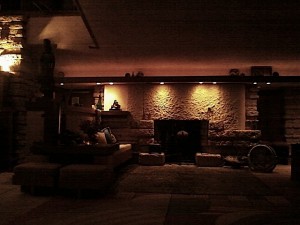 “We are healed of a suffering only by experiencing it to the full.”
“We are healed of a suffering only by experiencing it to the full.”
Marcel Proust, Albertine disparue
Terry Teachout on the arts in New York City
 “I repeat—how can the artist justify himself? The answer is that he cannot, and should stop boring himself with his egocentric need to try. The artist is a lucky dog. That is all there is to say about him. In any community of a thousand souls there will be nine hundred doing the work, ninety doing well, nine doing good, and one lucky dog painting or writing about the other nine hundred and ninety-nine.”
“I repeat—how can the artist justify himself? The answer is that he cannot, and should stop boring himself with his egocentric need to try. The artist is a lucky dog. That is all there is to say about him. In any community of a thousand souls there will be nine hundred doing the work, ninety doing well, nine doing good, and one lucky dog painting or writing about the other nine hundred and ninety-nine.”
Tom Stoppard, Artist Descending a Staircase
In today’s Wall Street Journal I review the premiere of Jane Anderson’s Mother of the Maid in Lenox, Massachusetts, and the Shakespeare in the Park production of Cymbeline in New York’s Central Park. Here’s an excerpt.
* * *
George Bernard Shaw cornered the market on plays about Joan of Arc with “Saint Joan,” which bagged him the 1925 Nobel Prize for literature. But other writers of note, including Maxwell Anderson, Jean Anouilh and Bertolt Brecht, have since put the Maid of Orléans on stage, albeit with varying degrees of success. Now comes Jane Anderson, whose teleplay for HBO’s 2014 adaptation of Elizabeth Strout’s “Olive Kitteridge” won her deserved acclaim, and whose “Mother of the Maid,” which was given its premiere last Friday by Shakespeare & Company, takes a tack sharply different from its predecessors. Instead of concentrating on the semi-legendary exploits of the virgin martyr (Anne Troup), Ms. Anderson shifts the emphasis to Isabelle (Tina Packer), her all-but-unknown mother, and does so to riveting effect.
 The conceit of “Mother of the Maid” is that the Arcs, though dressed in 15th-century attire, speak in the rough-hewn manner of a modern-day working-class British family, while St. Catherine (Bridget Saracino), the spectral narrator, sounds like a wisecracking millennial whose casual flippancy (“O.K, that went well”) allows skeptical viewers to keep the play’s religious content at arm’s length. Not that it’s hard to do so in any case, for “Mother of the Maid” is less about martyrdom than motherhood, and specifically about the yawning chasm of class and comprehension that opens up when an ordinary parent bears a gifted child who gradually turns (in Isabelle’s anguished words) into “something that’s taller and smarter than you will ever be.”
The conceit of “Mother of the Maid” is that the Arcs, though dressed in 15th-century attire, speak in the rough-hewn manner of a modern-day working-class British family, while St. Catherine (Bridget Saracino), the spectral narrator, sounds like a wisecracking millennial whose casual flippancy (“O.K, that went well”) allows skeptical viewers to keep the play’s religious content at arm’s length. Not that it’s hard to do so in any case, for “Mother of the Maid” is less about martyrdom than motherhood, and specifically about the yawning chasm of class and comprehension that opens up when an ordinary parent bears a gifted child who gradually turns (in Isabelle’s anguished words) into “something that’s taller and smarter than you will ever be.”
Ms. Packer’s performance is extraordinary in every way, a fast-flowing stream of indelible moments that she transmutes into an inseparable whole….
The Public Theater can do no wrong these days. First “Fun Home,” then “Hamilton,” and now a “Cymbeline” in Central Park that makes joyous sense out of a play that even the most devoted of Shakespeareans have oft looked at askance. What makes it a “problem” play (as most literary scholars categorize “Cymbeline”) is that the complex plot is stuffed with synopsis-defying implausibilities that in a less effective production can obscure the quintessentially Shakespearean themes of jealousy, forgiveness and reconciliation that give “Cymbeline” its emotional kick. Daniel Sullivan, the director, has gotten around this obstacle by shading his staging in the direction of knockabout farce, but doing so with the lightest and sweetest of touches….
* * *
To read my review of Mother of the Maid, go here.
To read my review of Cymbeline, go here.
 In today’s Wall Street Journal “Sightings” column I report on the night I recently spent in Taliesin, Frank Lloyd Wright’s Wisconsin home. Here’s an excerpt.
In today’s Wall Street Journal “Sightings” column I report on the night I recently spent in Taliesin, Frank Lloyd Wright’s Wisconsin home. Here’s an excerpt.
* * *
“No man,” said Dr. Johnson, “is a hypocrite in his pleasures.” Of all the truths told by that matchless observer of human nature, this one may come closest to absolute exactitude. We often lie to others about what pleases us, but few deceive themselves when pursuing their own happiness—and when the party in question is an architect who is designing a house for himself, he’ll almost certainly build what he likes, not what he thinks he ought to like.
All this came to mind when I slept last month in the guest bedroom of Taliesin, Frank Lloyd Wright’s rambling 601-acre country estate, not far from the village of Spring Green, Wisconsin….
 The hillside living quarters, originally built in 1911, were ravaged by fire and rebuilt in 1914 and 1925, after which Wright spent the rest of his long life tinkering with Taliesin, which he used as a kind of living sketchbook. It was there that he experimented with devices later employed in homes designed for his clients, incorporating other touches strictly for his amusement, the most fanciful of which is a vertigo-inducing cantilevered walkway that juts out from the living room. I tried to walk all the way to the far end at midnight, and turned back after a few shaky steps.
The hillside living quarters, originally built in 1911, were ravaged by fire and rebuilt in 1914 and 1925, after which Wright spent the rest of his long life tinkering with Taliesin, which he used as a kind of living sketchbook. It was there that he experimented with devices later employed in homes designed for his clients, incorporating other touches strictly for his amusement, the most fanciful of which is a vertigo-inducing cantilevered walkway that juts out from the living room. I tried to walk all the way to the far end at midnight, and turned back after a few shaky steps.
When the last tourist leaves and you lock the door, a deep, soothing hush settles over the house. I wandered in silence from room to room, looking with freshened eyes at the myriad ways in which Wright built Taliesin so as to dissolve the difference between the spacious interior and the serene countryside that surrounds it. Then I sat down in the living room, which contains a massive limestone hearth, huge picture windows that let in starlight from the night sky, a Bechstein concert grand (on which I softly played a Bach prelude) and a Wright-designed four-sided music rack meant for use by a string quartet….
 At length I retired to the stucco-and-stone guest bedroom, a smallish space with unexpectedly high ceilings (Wright appears to have designed many of his buildings with his own small stature in mind). Its simple furnishings include another hearth, a desk, a reasonably comfortable bed and a bookshelf containing a quirky but somehow characteristic selection of volumes…
At length I retired to the stucco-and-stone guest bedroom, a smallish space with unexpectedly high ceilings (Wright appears to have designed many of his buildings with his own small stature in mind). Its simple furnishings include another hearth, a desk, a reasonably comfortable bed and a bookshelf containing a quirky but somehow characteristic selection of volumes…
The room is not for slugabeds. I was awakened at dawn by bright sunshine flooding through the unshaded floor-to-ceiling windows. It felt strange at first to wash in the bathroom sink, but then I remembered that before it was a museum, Taliesin was a place where people lived, one of whom was a genius who designed it specifically for his pleasure but also wanted ordinary Americans to own smaller houses of their own that partook of the same harmonious beauty….
* * *
Read the whole thing here.
I left the following story out of my Wall Street Journal column about spending a night in Frank Lloyd Wright’s home because I suspected that most of my readers wouldn’t have believed it. It is, however, true, and I share it with you here for your amusement.
 As I sat in the living room of Taliesin at midnight, it occurred to me that it would be appropriate for me to listen to a piece of music that Frank Lloyd Wright would have liked, so I fetched my iPod, plugged in my travel speaker, and played the Busch String Quartet’s 1941 recording of the cavatina from Beethoven’s B Flat Quartet, Op. 130.
As I sat in the living room of Taliesin at midnight, it occurred to me that it would be appropriate for me to listen to a piece of music that Frank Lloyd Wright would have liked, so I fetched my iPod, plugged in my travel speaker, and played the Busch String Quartet’s 1941 recording of the cavatina from Beethoven’s B Flat Quartet, Op. 130.
I thought as I listened of what Aldous Huxley wrote in his essay Music at Night about the experience of listening to late Beethoven on a starlit June evening:
Blessed and blessing, this music is in some sort the equivalent of the night, of the deep and living darkness, into which, now in a single jet, now in a fine interweaving of melodies, now in pulsing and almost solid clots of harmonious sound, it pours itself, stanchlessly pours itself, like time, like the rising and falling, falling trajectories of a life. It is the equivalent of the night in another mode of being, as an essence is the equivalent of the flowers, from which it is distilled. There is, at least there sometimes seems to be, a certain blessedness lying at the heart of things, a mysterious blessedness, of whose existence occasional accidents or providences (for me, this night is one of them) make us obscurely, or it may be intensely, but always fleetingly, alas, always only for a few brief moments aware.
No sooner did the music start than what looked to me like a blackbird flew into the room. It fluttered around until the movement came to an end, then vanished. I never saw it again.
A few days later I told my friend Keiran Murphy, a Wright scholar who works at Taliesin, about the incident. “Probably a bat,” she said matter-of-factly. “We get them all the time.”
* * *
This is the record that I played at Taliesin:
 “In Beethoven’s music I sense the master mind, fully conscious of the qualities of heartful soaring imagination that are god-like in a man. The striving for entity, oneness in diversity, depth in design, repose in the final expression of the whole—all these are there in common pattern between architect and musician. So I am going to a delightful, inspiring school when I listen to Beethoven’s music—music not ‘classic’—soul language never to be classified. Because of soul-depth and breath of emotional range, Beethoven’s music is in itself the greatest proof I know of divine harmony alived in the human spirit. As trees and flowering things under the changing lights of a beclouded sun pervade the all out of doors, so Beethoven pervades the universe of the soul.”
“In Beethoven’s music I sense the master mind, fully conscious of the qualities of heartful soaring imagination that are god-like in a man. The striving for entity, oneness in diversity, depth in design, repose in the final expression of the whole—all these are there in common pattern between architect and musician. So I am going to a delightful, inspiring school when I listen to Beethoven’s music—music not ‘classic’—soul language never to be classified. Because of soul-depth and breath of emotional range, Beethoven’s music is in itself the greatest proof I know of divine harmony alived in the human spirit. As trees and flowering things under the changing lights of a beclouded sun pervade the all out of doors, so Beethoven pervades the universe of the soul.”
Frank Lloyd Wright, An Autobiography
An ArtsJournal Blog